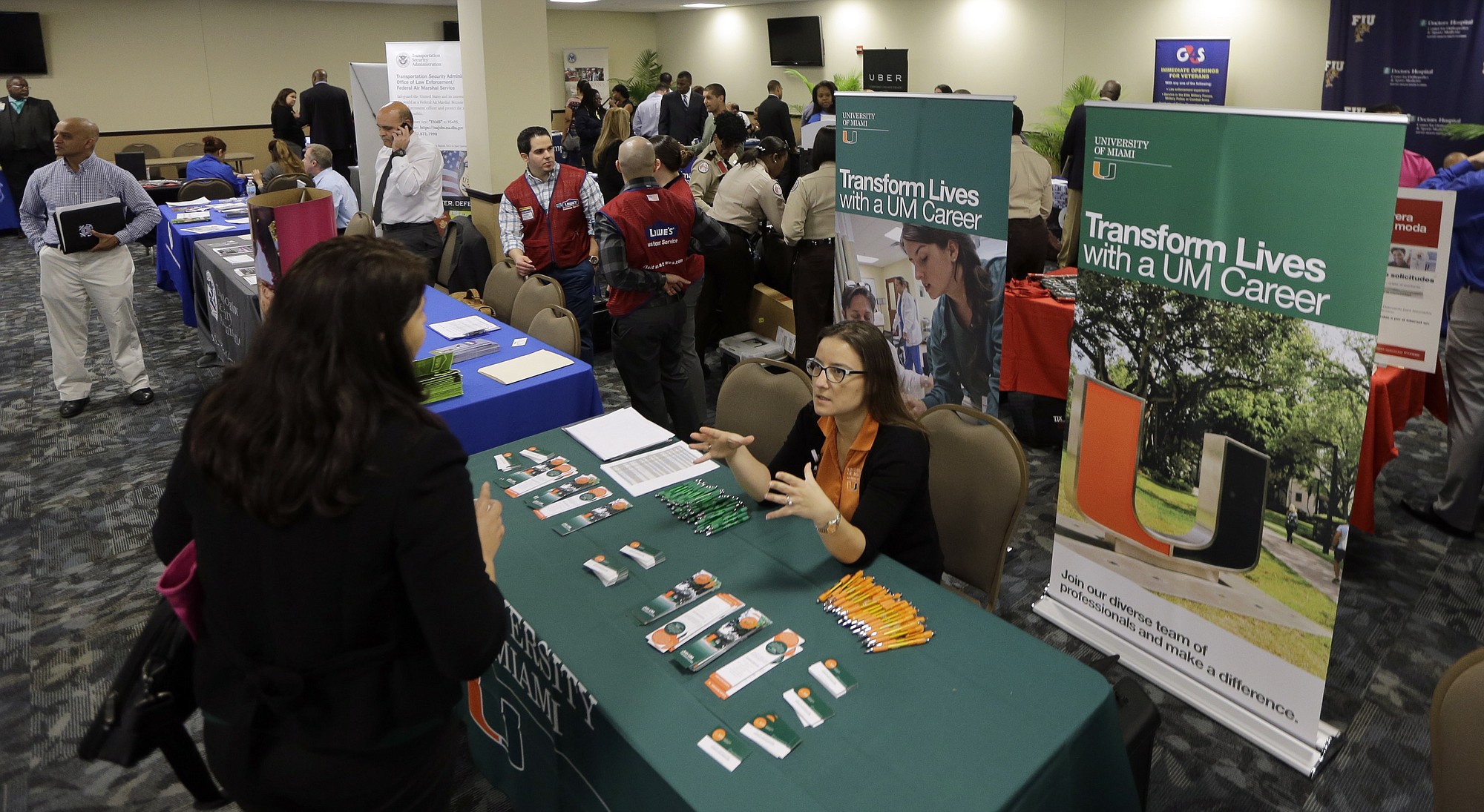WASHINGTON — Even after the most vigorous three-month hiring spree in 17 years, U.S. employers are showing few signs of letting up.
Job growth for February, to be reported Friday, might not match the furious pace of November through January, when 1 million positions were added. Harsh winter weather likely discouraged some hiring.
Yet economists foresee a solid job gain of 240,000 and a drop in unemployment to a near-normal 5.6 percent — evidence of a job market that continues to outshine others around the world.
“People are pretty optimistic about the U.S. economy, and they’re hiring,” said Frank Friedman, interim CEO of Deloitte, the consulting firm that counts 80 percent of the Fortune 500 as clients.
A bright outlook among employers has translated into a robust average of 268,000 jobs added monthly over the past 12 months. That means there are 3.2 million more Americans earning paychecks now than at the start of 2014. That additional income, along with sharply lower gas prices, has left more Americans able to spend.
It also helps explain why the unemployment rate has sunk so far below the 10 percent peak it reached in 2009 even though the economy isn’t growing as fast as it often has during expansions: Increased customer demand is compelling employers to fill jobs.
In addition, many Americans who lost jobs in the recession have retired or given up looking for work and are no longer counted as unemployed.
The steady hiring may also finally be forcing wages up. Average hourly earnings rose 0.5 percent in January, the most in six years. Economists did caution against reading too much into one month’s figure. Most expect a more modest average wage gain in February.
On Thursday, the government said the number of people who sought unemployment benefits rose last week to the highest level since May. Still, the four-week average of unemployment applications, which is less volatile, remains near a historically low level that typically signals healthy job growth.
Friday’s jobs report will come less than two weeks before the next policy meeting of the Federal Reserve, which is considering when to raise interest rates from record lows.
Tim Hopper, chief economist at TIAA-CREF, suggested that the strengthening job market and tentative signs of pay increases give the Fed room to move toward raising short-term rates.
Most analysts expect the Fed to pave the way for higher rates by adjusting the statement it issues after its March meeting, to be followed by the first hike in June or September.
Held back by weather
It may turn out that some temporary factors held back job growth in February.
Snow and ice storms in the Midwest and parts of the Southeast closed some businesses and possibly delayed hiring. Boston and other parts of the Northeast have been hit by enormous snowfalls.
Investment bank UBS estimates that such factors lowered February’s job gain by 25,000. Construction companies, auto dealers, and retailers are the sectors most likely to have been affected by winter storms and unseasonably cold weather.
Several industries may also be hiring less than in recent months or even cutting back. Oil and gas drilling companies have cut jobs in response to the 60 percent drop in oil prices since summer. Applications for unemployment aid have risen in such oil-heavy states as Texas, Oklahoma and North Dakota.
In January, retailers reported a sizable job gain, which most economists don’t think is sustainable.
Manufacturers may also have pulled back in the face of weaker growth overseas. A survey of manufacturing firms shows that export orders have shrunk for two months. The U.S. dollar has also soared in value compared with the euro and Japan’s yen, thereby squeezing profits for American multinationals that operate overseas.
Yet the U.S. job market and economy, for all their obstacles, are still outdoing those of other major nations. Though Europe and Japan are showing signs of growing more than last year, their economies remain feeble. The euro currency union’s unemployment rate has started to fall, but at 11.2 percent it remains nearly twice the U.S. level.
On Thursday, China lowered its economic growth target for 2015 to 7 percent from 7.5 percent last year as it tries to make its slowing economy more productive.
The U.S. economy expanded at a breakneck annual pace of 4.8 percent in last year’s spring and summer, only to slow to a tepid 2.2 percent rate in the final three months of 2014. Many economists estimate that growth is picking up slightly in the current quarter to an annual rate of 2.5 percent to nearly 3 percent.
Still, economists remain bullish about hiring despite the slowdown in growth. The fourth quarter’s slowdown occurred largely because companies reduced their stockpiles of goods, which translated into lower factory output.
But companies focus more on consumer demand in making hiring decisions, and demand was strong in the October-December quarter. Americans stepped up their spending by the most in four years.
And though consumers are saving much of the cash they have from cheaper gas, spending in January still rose at a decent pace after adjusting for lower prices.
Mark Zandi, chief economist at Moody’s Analytics, expects the economy to grow 3 percent this year, which would be first time it’s reached that level in a decade.



